Your Guide to Planting Liriope for a Beautiful, Shade-Friendly Garden
The genus Liriope consists of perennial, grass-like flowering plants native to various regions across Asia. In the United States, two species are particularly common: Liriope muscari (commonly known as lilyturf) and Liriope spicata (also referred to as creeping lilyturf or monkey grass). Both species are low-maintenance ground covers, known for their drought tolerance and are often grown to prevent soil erosion, decorate garden borders, and control weeds.
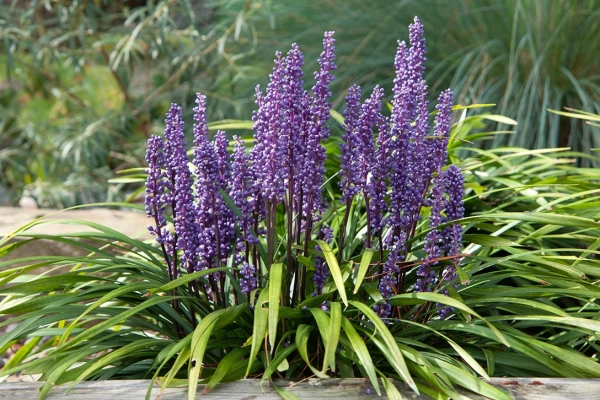
Liriope spicata derives its name from the spike-like shape of its flowers, while Liriope muscari is named after Muscari botryoides (grape hyacinth) because of the resemblance between their flowers. Their blossoms are typically lavender or white, blooming from August to September. Liriope can be planted at any time from spring to fall, primarily from nursery stock or by division. Some varieties are more vigorous and spread faster than others, though watering and fertilization practices heavily influence growth rates.
Popular Varieties of Liriope
- Liriope muscari Majestic: Features large, lavender-colored flowers and dark green foliage.
- Liriope muscari Christmas Tree: Produces pale lavender blooms.
- Liriope muscari Evergreen Giant: Has white flowers emerging from sturdy, evergreen leaves.
- Liriope muscari Monroe’s White: Displays striking white flowers against dark green foliage with leaves about 1/2 inch wide.
- Liriope muscari John Burch: Shows off lavender flowers, with green leaves edged in yellow-white variegation.
- Liriope spicata Silver Dragon: Boasts lavender flowers arising from green leaves striped with white.
- Liriope spicata Franklin Mint: Similar to 'Silver Dragon', but with slightly wider leaves.
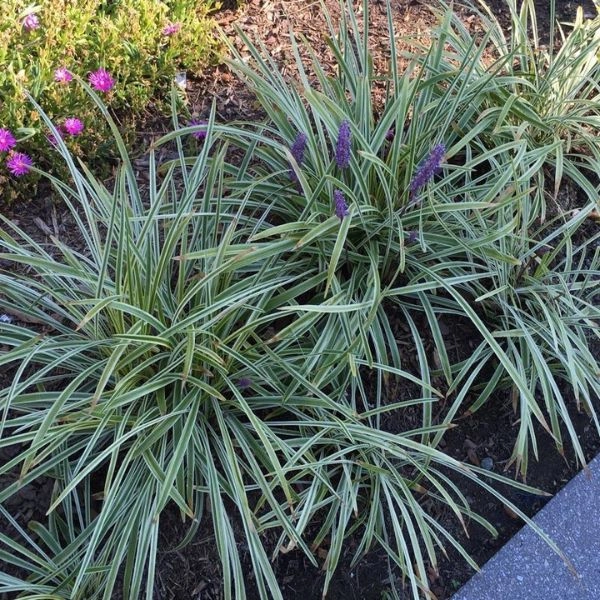
How to Care for Liriope
1. Environmental Requirements
- Soil and Planting Spacing: Liriope thrives in a wide range of soil types, from sandy to clay, with pH levels ranging from acidic to neutral. However, the most crucial condition is well-draining soil. When planting, space the plants about 1 foot apart, especially with L. spicata due to its spreading nature.
- Light: Liriope grows best in partial shade but can also tolerate full sun. In hotter climates, it prefers afternoon shade. However, if planted in deep shade, the foliage may grow elongated, and the plant’s growth may slow down.
- Water: During the first growing season, water the plants regularly but avoid overwatering to prevent soil saturation. Once established, Liriope is quite drought-tolerant and can go longer between waterings.
- Temperature and Humidity: Liriope thrives in daytime temperatures between 68°F and 75°F. In areas with harsh winters, protect the plants from severe cold.
- Fertilizer: Apply a slow-release fertilizer (like 10-10-10) or organic fertilizer in early spring to encourage healthy growth. Limit the fertilizer to about 1/4 cup per plant to avoid excessive growth.
- Pruning: To maintain neat and attractive Liriope, prune the leaves in late winter or early spring before new growth begins. Remove spent flowers and dead leaves to keep the plant fresh and vibrant.
2. Winter Care for Liriope
Liriope is an evergreen plant that can withstand USDA zone 4, but it will go dormant in winter. To protect it during colder months, you can trim back the leaves just above the crown, or leave them intact, but ensure any dead or brown leaves are removed to prevent pests or diseases. In areas with severe cold, applying a layer of dry leaves can help protect the plant from winter stress and potential damage.
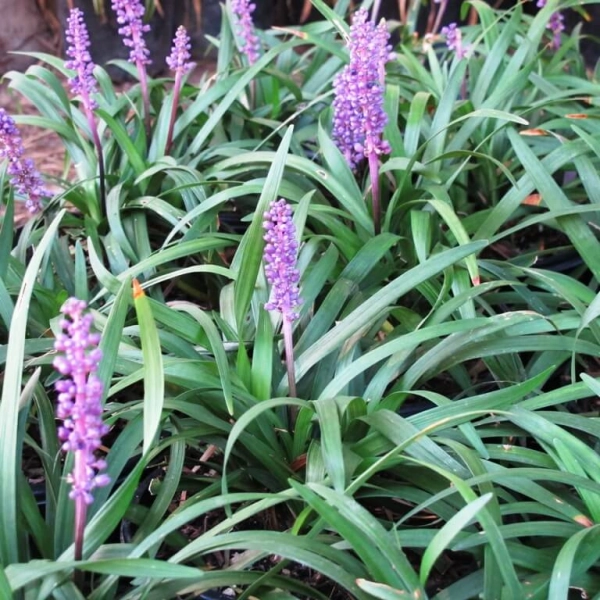
3. Common Pests and Diseases
- Pests: Indoor Liriope plants may be susceptible to mealybugs and aphids, which can be effectively controlled with horticultural oil. Outdoors, slugs and snails are common pests. Keep the area around the plants clean and use diatomaceous earth to deter these pests.
- Diseases: Liriope can suffer from anthracnose and root and crown rot.
- Anthracnose: This fungal disease appears after heavy rainfall or overhead watering, causing reddish-brown spots along leaf edges and tips. To prevent it, prune back last season’s leaves to about 3 inches and clear away debris around the plant.
- Root and Crown Rot: Caused by the fungus Phytophthora palmivora, this disease leads to yellowing leaves followed by browning and plant death. If symptoms are detected, the infected plant should be discarded to prevent the spread to other plants.
4. Planting and Repotting Liriope
Liriope is often used as ground cover, but it can also be grown in containers. To help Liriope thrive in pots, use well-draining, nutrient-rich soil. Choose a pot with large drainage holes that is at least 3 inches deeper than the plant’s root system. Liriope tends to do well when its roots are slightly pot-bound, but if you notice roots growing out of the drainage holes, it's a sign that the plant needs repotting. Select a pot one size larger and refresh the soil.
How to Propagate Liriope
Liriope is typically propagated through division, which is best done in late fall or early spring. This timing ensures that the plant will grow strong after the division process. After the third growing season, dividing Liriope not only helps control its spread but also promotes healthier growth, although it's not required for the plant's health or longevity. Here's how to do it:
- Select a Healthy Cluster: Find a healthy, well-watered clump of foliage. Using a sterilized knife, carefully cut through the root system, dividing the plant into smaller clumps, each with sufficient roots.
- Transplant: Move the newly divided sections to a new area in the garden or into new containers. Ensure that the roots are not buried too deeply to allow the plant to "breathe" and prevent root rot. Pack soil around the plant to support root growth without covering the plant too much.
- Choose a Suitable Pot: If planting in pots, select a container larger than the current root ball, allowing a few inches of space between the roots and the pot’s sides and bottom for future growth.
How to Grow Liriope from Seed
Growing Liriope from seed is more challenging than dividing roots, but it's a rewarding method of growing new plants from scratch. Seeds are harvested from the dark purple berries in the fall. The process requires careful preparation:
- Prepare the Seeds: Collect the berries, then dry them. Soak the berries in warm water for 24 hours to soften and remove the pulp.
- Clean the Seeds: Optionally, soak the seeds in a solution of 1 part bleach to 9 parts water for 10 minutes to remove phenolic acid from the seed coat, improving germination rates.
- Plant the Seeds: Sow the seeds about 1/4 inch deep in clean soil. Keep the soil evenly moist until germination occurs, typically within 1-2 weeks. The ideal germination temperature is 65-70°F, maintained for at least 30 days.
- Transplant the Seedlings: Once the seedlings are about 1 inch tall, they can be transplanted to the garden or moved into larger pots.
How to Ensure Liriope Blooms Successfully
1. Blooming Season
Liriope typically blooms from late summer into fall. This is the peak growing period when the plant adds vibrant color to your garden.
2. Flower Characteristics and Fragrance
Liriope flowers grow in clusters that reach 6 to 8 inches in height. The flowers come in a variety of colors, including lavender, purple, pink, white, and lilac. Occasionally, the flowers emit a sweet, strong fragrance, enhancing the appeal of the surrounding space.
3. Encouraging More Blooms
If your Liriope is not blooming, it could be due to environmental stress such as extreme temperatures, lack of water, insufficient sunlight, or poor soil drainage. Another potential issue could be high nitrogen levels in the soil, which can hinder flower production. To encourage blooming, adjust the growing conditions, such as ensuring consistent watering, providing adequate sunlight, and improving soil drainage. Pruning the plant in late winter is also beneficial, but be careful not to damage the foliage, as this helps the plant conserve nutrients for the next blooming season.
4. Common Problems with Liriope
- Brown Leaf Tips: This issue occurs more often with indoor plants than outdoor ones. It is typically caused by a lack of water or dry air. To resolve this, water the plant thoroughly and mist it to increase humidity.
- Yellow Leaves: Yellowing leaves with brown or black spots at the base may indicate root rot. Apply a fungicide and remove the affected areas if caught early. However, if the entire plant turns brown or black, it should be discarded to prevent the spread of disease. Yellow leaves can also result from poor soil drainage or excessive sunlight exposure.
- Leaf Scars from Slugs and Snails: Slugs and snails enjoy feeding on Liriope leaves, leaving scars behind. To eliminate them without harming the plant, use natural methods such as sprinkling diatomaceous earth or applying eco-friendly homemade remedies.
By paying close attention to the environment and providing proper care, you can ensure that your Liriope thrives and produces beautiful blooms each season.
Tags: Indoor Ornamental Plants | Outdoor Ornamental Plants | Bonsai Plants | Aquatic Ornamental Plants | Miniature Ornamental Plants |











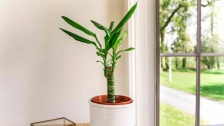
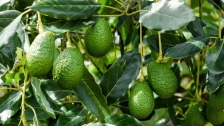
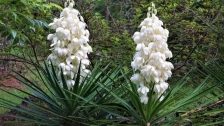




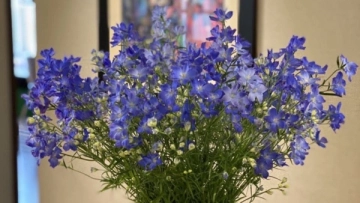
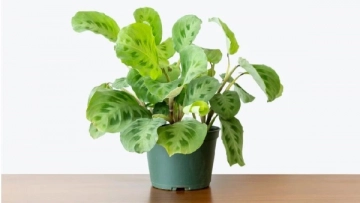

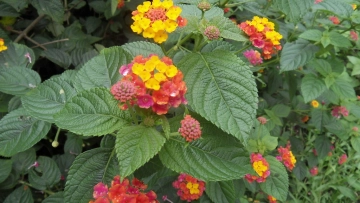
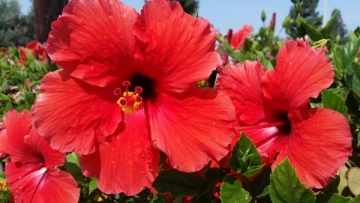
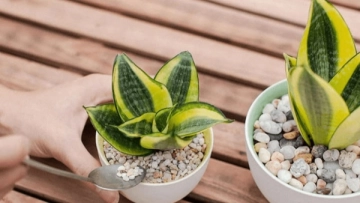
Tami Guenther
October 01 , 2024